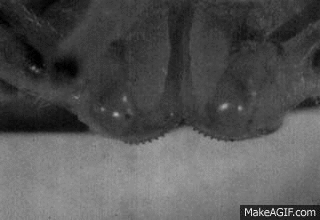That's what they say publicly. But what they said, when they thought no one was listening, was quite different. According to an inadvertently leaked "Wedge Documnent", the guys who invented the doctrine wrote:
Governing Goals
To defeat scientific materialism and its destructive moral, cultural and political legacies.
To replace materialistic explanations with the theistic understanding that nature and hurnan beings are created by God.
http://www.antievolution.org/features/wedge.html
It's a religion, not science.
The assertion in post #8 was "Even the guys who invented ID as a religion say so"
This is from intelligent design.org "The idea that human beings can observe signs of intelligent design in nature reaches back to the foundations of both science and civilization".
http://www.intelligentdesign.org/faq.php
Intelligent design theory is based on empirical observations and has been around a lot longer than people think. What you quoted was the discovery institutes philosophy, a good philosophy, but isn't science. Anyway, what's so terrible about defeating materialism?!?
As far ar irreducible complexity, Behe even said in his book being able to make a mousetrap from spare parts laying around a garage doesnt address HOW they were repurposed, it only shows something can have more than one purpose. Because a screwdriver can be used to pry or stab doesnt prove anything about its origin
Which is consistent with observed evolution. Natural selection doesn't care what a structure "is for." It often reworks something to entirely new functions, as you see in the flagellum.
I can't make the connection.
It doesn't require God to step in and tinker with it. He created something that does it without design. You see, natural selection just tends to preserve changes that make it more likely for an organism to live long enough to reproduce. It doesn't care what things "are for."
.
.doesn't address how[/i[ they were repurposed
Mutation and natural selection.
..or.. doesn't prove anything about its origin...
That's wrong, too. We can for example, tell the difference between homologous and analogous organs by looking at the details of their anatomy or genetics.
is consistent with observed evolution? Where did anyone ever observe something being reworked into entirely new functions??
When did anyone ever observe a giant redwood to grow from a seed? Your argument is that a man can have a grandfather, but he can't have a great, great, great grandfather, because you never saw that happen. However, the evolution of an entirely new organ in Pod Mrcaru lizards has been documented, so on rare occasions, it happens fast enough to be observed in one person's lifetime.
The function of the bacteria flagellum is motility.
Barbarian observes:
In the same sense as the function of forelimbs in tetrapods is to walk. And yet they evolved for digging, flying, swimming, and manipulating objects.
And dolphins don't walk on their limbs anymore. That's how evolution works.
In fact, conjugation and other forms of invasive transfer between prokaryotes preceded eukaryotes. So not really an issue. But of course, if the flagellum evolved first and later was simplified and refined into a very effective transfer structure, that would still be evolution.
Nothing broken about something that works so well. But again, evolution works by modifiying something already there, so it could have happened that way. The evidence suggests not, however.
Comes down to evidence. And that's the way that ends.
The only way any of that can be considered "evidence" is if we consider speckulation evidence.
I don't think that's going to help you at this point. Instead of denying the evidence on the table, you should be trying to put together a cogent alternative that is consistent with the evidence.
Barbarian, regarding ID/Creationism:
In which case, that's just a sophisticated version of Pagans imagining little nature gods that pranced around, making a tree here, a rabbit there, changing forelimbs into fins, or fins into wings, changing a type 4 secretion into a type 3 secretion system, or a type 3 secretion system into a flagellum.
Nobody has provided a step by evolutionary step explanation of the bacteria flagellum. The type three secretory system is a terrible example of 1 possible step.
As you learned, there are a number of different bacterial flagella, each less complex than the last. And of course, an even less complex version, using many of the same parts, still works for an entirely different function. Precisely what ID denies happening. So that's not a valid excuse, either.
Bacteria exhisted a long time before eukaryotes. The argument the TTSS predates the bacteria flagellum motor is putting the cart before the horse. A predator supposedly evolved a needle to infect a non-existent prey?
Barbarian observes:
Two errors there; first there's a lot of transfer between prokaryotes, and likely always has been. Second, bacteria have other modes of movement than flagella.
That's just a rabbit trail.
You denied that bacterial could move about without flagella, and it's a fact that bacteria interact and inject material into each other, quite apart from prokaryotes. If that's a rabbit trail, I just brought it to an abrupt end.












